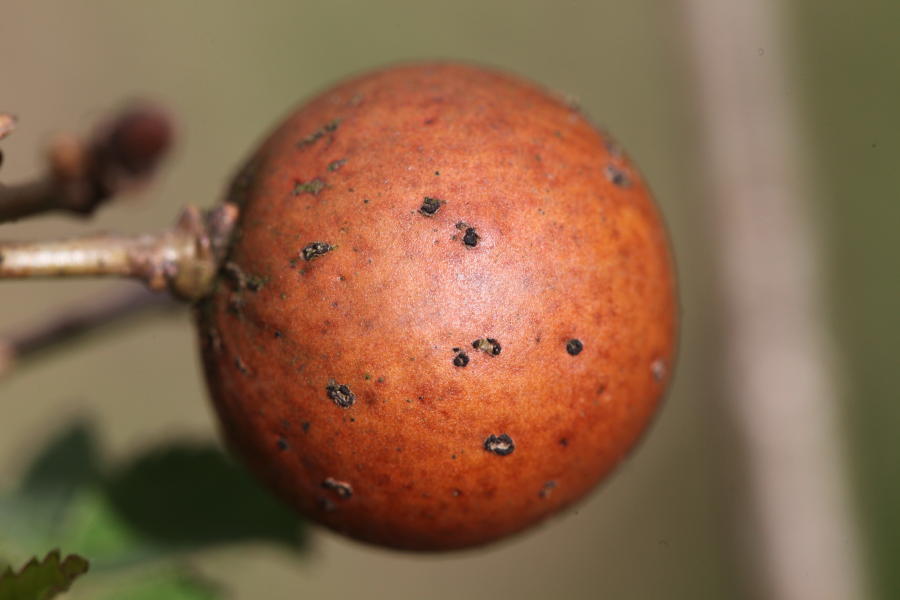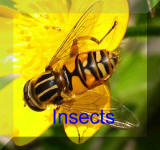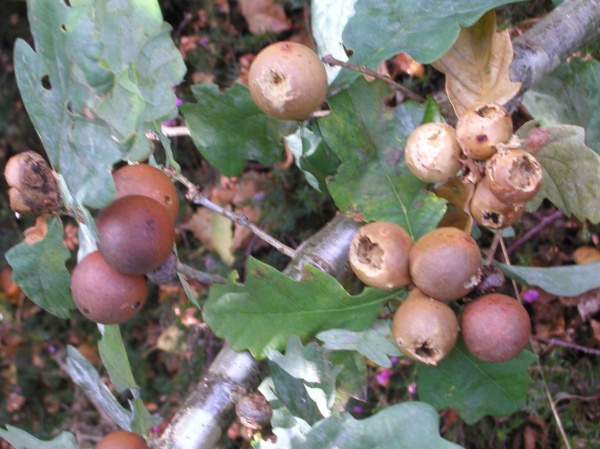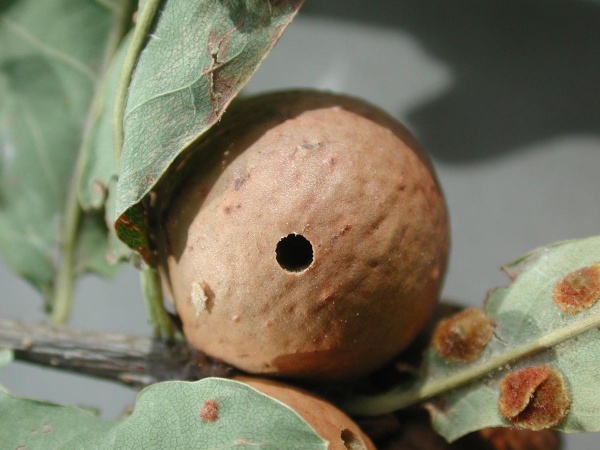Marble Gall Andricus kollari
Hymenoptera: Cynipidae
AKA Cynips kollari, Andricus quercusgemmae, A. hispanicus, A. minor, A. indigenus and A. circulans.
Description
Oak marble galls develop as a chemically induced distortion of leaf buds on pedunculate oak (Quercus robur), sessile oak (Quercus petraea) or their hybrid Quercus × rosacea,[1] trees, caused by the parthenogenetic gall wasp (Andricus kollari, ) which lays eggs within leaf buds using their ovipositor. The Turkey oak (Quercus cerris), introduced into Britain in 1735, is required for the completion of the life cycle of the gall. The oak marble gall is frequently confused with the oak apple gall, caused by the gall wasp, Biorhiza pallida. Oak marble galls are also known as the bullet gall, oak nut or Devonshire gall.
The Wasp
By TristramBrelstaff (Own work)
[CC BY-SA 4.0], via Wikimedia Commons
The Gall Appearance
The gall growth first appears as a rounded mass of green plant tissue on the leaf buds of the oak, later becoming hard and brown, being up to approximately 25 mm / 1 in in diameter. Although nearly spherical, the galls often have a number of little flattened nodules. The rounded growths are filled with a spongy mass and a single wasp larva is located in a hard seed-like cell in the centre 'marble' derives from the gall's shape, which is a marble-like rounded structure. As stated, although normally distinctive the oak marble gall can, under some growth conditions, be mistaken for the oak apple gall, caused by a number of gall wasps, such as Biorhiza pallida This may be the Oak apple gall which grows to be somewhat larger, but has red markings, but does grow on the axillary or terminal buds. The galls sometimes coalesce. The non-parasitised specimens are at the largest end of the size range.
Life Cycle
The marble gall has alternating sexual and asexual generations, often taking two years to complete, especially in the north of Britain. The familiar summer gall develops from eggs laid by a sexual female in the developing buds of our two native oaks in May or June; the host trees often being immature or retarded, scrub-oak, specimens; they are rarer on older healthy trees.
Developing spherical galls are green at first, brown later, and mature in August. Each gall contains a central chamber, with a single female wasp larva of the asexual generation, which emerges through a 'woodworm-like' hole as an adult winged gall-wasp in September.
These asexual (agamic) females lay unfertilized eggs in the embryonic bud leaves of the Turkey oak, with galls slowly developing during winter, and are visible in March and April as small oval structures between the bud scales, looking like ant's eggs or pupae
The emerging adult gall-wasps in spring are the sexual generation, producing both males and females, which fly to the common oaks to initiate the formation of the summer marble gall
The abnormal buds develop during summer and the bud is wholly replaced by the gall growth. Marble galls may remain attached to the tree for several years The level of attack by the insect varies greatly from year to year
Habitat




